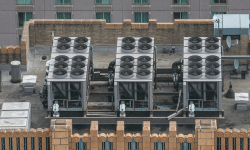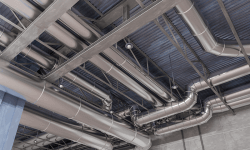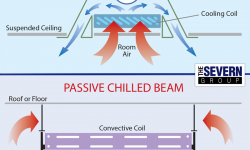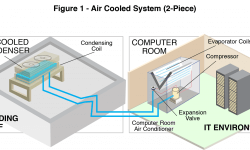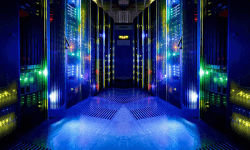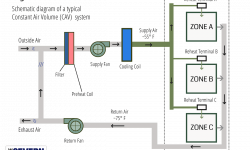A commercial building requires a large HVAC unit or several units to provide comfort. During the hot summer months, temperatures can rise quickly, and over time a commercial A/C unit or HVAC system will require repairs or even replacement. If the unit is older, consider replacing the system to provide better indoor air quality, energy efficiency, and comfort. But how do you know when its time to replace your unit? Read on to learn about the common signs that your commercial A/C is ready for replacement.
Read more →While you may take care of maintenance, you might also be considering how long the system will last. When was the last time it was replaced? How many years can you honestly expect to get out of your HVAC system? These questions are something to keep in mind when you own a business. Here’s a look at the factors that play a role in the commercial HVAC equipment lifespan.
Read more →Air ducts serve as a passageway to allow air from the heating, ventilation and air conditioning (HVAC) system to transfer to various areas of the home or business facility. Considering that air ducts contribute to the air that we breathe, this system should be appropriately installed and continuously maintained.
Read more →Chilled beams are often compared to a chilled ceiling though there is a distinguishable difference between the two. A chilled ceiling will use pipes with water flow as a chilled beam system. However, the pipes of the ceiling will be placed behind metal ceiling plates. Then, the plates are heated or cooled based on the method of convection rather than the pipes providing the heating or cooling method.
Read more →In heating, ventilation, and air conditioning (HVAC) there are systems that cool and heat forced air. Forced air is a central heating system that uses air as its medium to transfer heat. This system relies on vents, duct work, and plenums for building air distribution that is separate from actual cooling or heating systems.
Read more →Data centers and IT rooms are becoming an integral part of businesses across the globe. And, as technology continues to change and evolve, computing equipment is being created in smaller sizes. However, the smaller size uses more electricity and can generate more heat, which creates a need for heat removal. So, it is essential that such spaces have precision cooling and heat rejection equipment in order for the equipment to stay at an even temperature and avoid overheating. There are several heat removal methods in which cooling equipment can be used to mediate the high heat generated by the computing equipment.
Read more →Working with a lot of HVAC systems, most managers have come across the acronym BTU. But what does it really pertain to and how is it relevant to the HVAC system? Understanding BTUs and how to calculate them provides a closer look at how effective the existing HVAC system can be while doing its job.
Read more →Figuring out the proper temperature for a data center can be a daunting task. Data centers are heavily relied on to keep confidential information safe and secure at all times. Here are some of the problems data centers face when temperatures rise too high, and what you can do to reduce them.
Read more →Twenty to thirty years ago it was common practice to install a CAV (constant air volume) system in commercial buildings for ventilation and air-conditioning. These types of HVAC systems require high airflow rates and higher amounts of energy for heating and cooling. Thus, increasing utility costs. Therefore, the theory is, […]
Read more →As the temperature starts to rise, the Office Thermostat Settings Wars begin! It is an age-old battle that has gone on in the workplace since virtually the conception of modern indoor central air conditioning. Believe it or not, it is possible to reach across the aisle, and come up with a peaceful resolution, without […]
Read more →